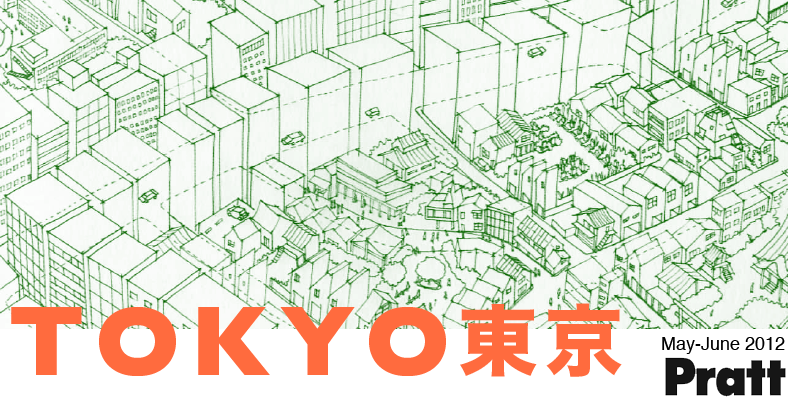arrived
 Friday, May 25, 2012 at 7:20PM
Friday, May 25, 2012 at 7:20PM 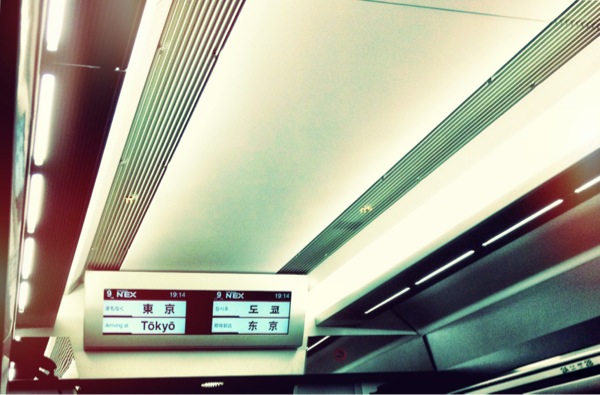
The entire class, very drowsy, has made it into Tokyo. I'm planning a short night tour of the neighborhood after we settle in at NOMYC.
My journal for the summer of 2012, looking at public space and planning in Tokyo, Japan.
 Friday, May 25, 2012 at 7:20PM
Friday, May 25, 2012 at 7:20PM 
The entire class, very drowsy, has made it into Tokyo. I'm planning a short night tour of the neighborhood after we settle in at NOMYC.
 Wednesday, May 23, 2012 at 7:29AM
Wednesday, May 23, 2012 at 7:29AM Barrie also presents a list of key phrases for understanding the Western city/Japanese city dichotomy:
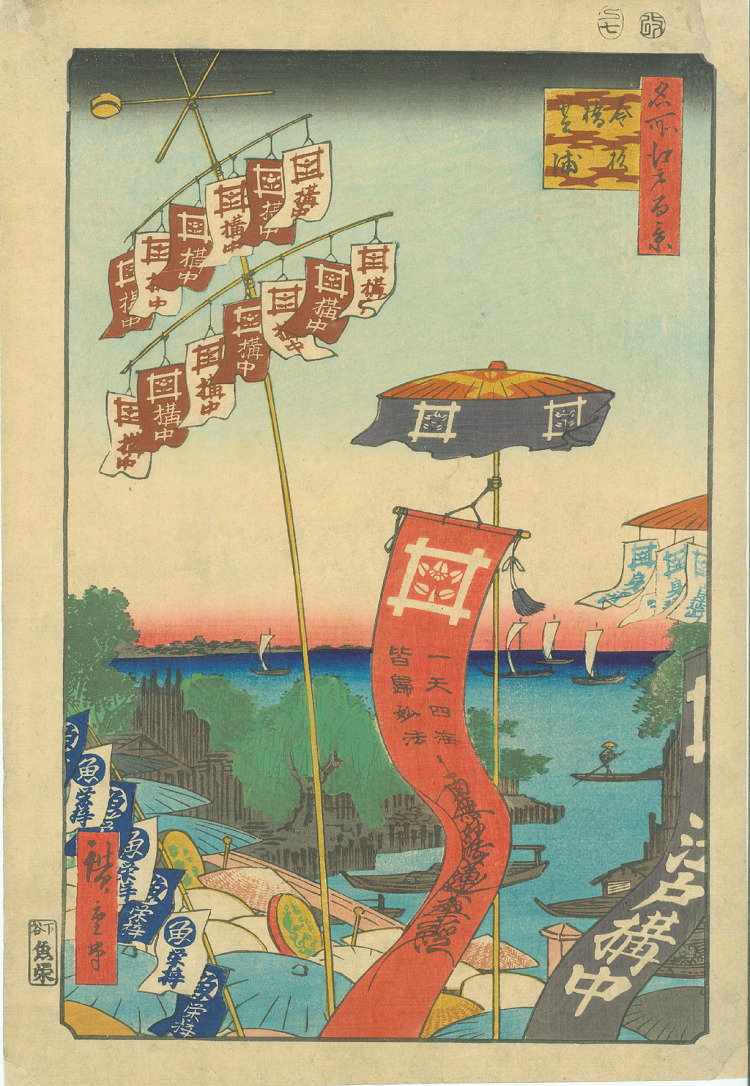 Kansugibashi - Hiroshige (1857) According to Barrie, this print helps summarize how the urban space is traditionally conceived in Japan: fragmented, complex, with a multitude of activities taking place. The framing, Barrie asserts, is also deliberately ambiguous, avoiding any one central subject
Kansugibashi - Hiroshige (1857) According to Barrie, this print helps summarize how the urban space is traditionally conceived in Japan: fragmented, complex, with a multitude of activities taking place. The framing, Barrie asserts, is also deliberately ambiguous, avoiding any one central subject
 Wednesday, May 23, 2012 at 7:01AM
Wednesday, May 23, 2012 at 7:01AM 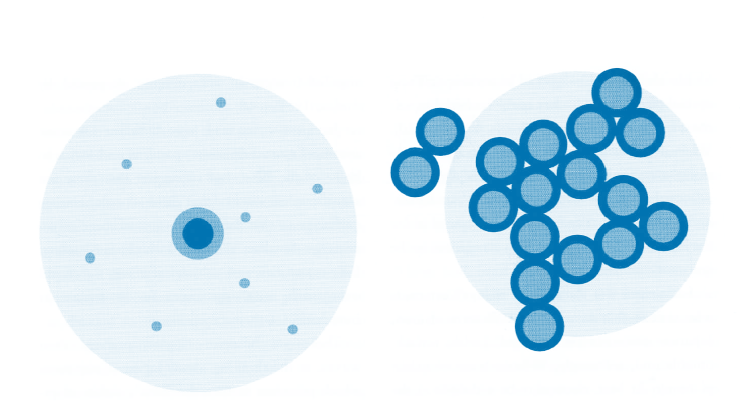 Japanese cities (right) tend to have multiple "centers" spread out over wide distances. The traditional Western city (left) tends to have a more dominant central coreIn understanding Japanese cities, we carry Western preconceptions of how cities are shaped and read. Barrie Shelton explores changing perceptions of cities like Tokyo through Western eyes over the course of the twentieth century.
Japanese cities (right) tend to have multiple "centers" spread out over wide distances. The traditional Western city (left) tends to have a more dominant central coreIn understanding Japanese cities, we carry Western preconceptions of how cities are shaped and read. Barrie Shelton explores changing perceptions of cities like Tokyo through Western eyes over the course of the twentieth century.
We see a shift, both in Western and Japanese planners and architects, from condemnation of the "chaos" of Japanese cities to a more subtle understanding of how these cities function.
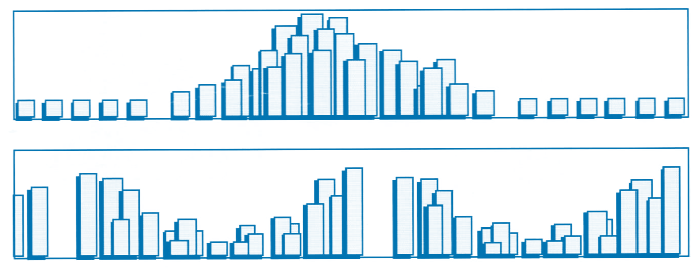 Western cities tend to have skylines which concentrate towards a central business district or downtown. In cities like Tokyo, smaller, quieter residential areas are bordered by high rise buildings on busy streets. These 'shells', rather than peripheral location, give these neighborhoods relative tranquilityIn particular, there are key distinctions in the way space is organized. Gunther Nitschke, in 1966, noted that space in Japan is not formed by compositional elements, as in the West, but more often through signs and symbols, and the current human use of the space.
Western cities tend to have skylines which concentrate towards a central business district or downtown. In cities like Tokyo, smaller, quieter residential areas are bordered by high rise buildings on busy streets. These 'shells', rather than peripheral location, give these neighborhoods relative tranquilityIn particular, there are key distinctions in the way space is organized. Gunther Nitschke, in 1966, noted that space in Japan is not formed by compositional elements, as in the West, but more often through signs and symbols, and the current human use of the space.
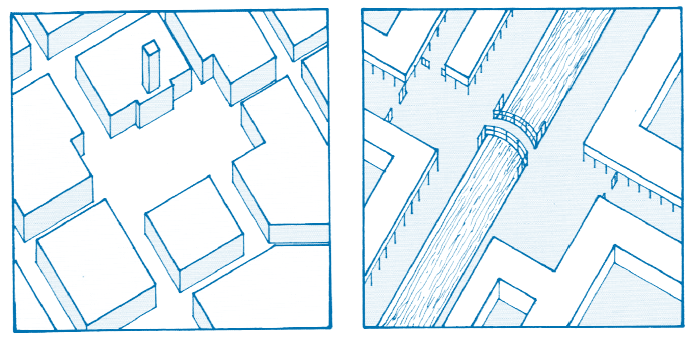 Jinnai writes that the open spaces of a bridge crossing often formed central public space in traditional Edo, and these spaces are often still in existence today. These open spaces were places for gathering, as opposed to the often closed and sharply defined squares of old European towns.This leads towards a more flexible urban space. Kisho Kurakawa uses the metaphor of tree versus rhizome when comparing Western and Japanese cities. Fumihiko Maki creates the useful dichotomy of 'clock' versus 'cloud.' The clock may be represented by a traditional Western city: the relation of parts to the whole are systematic - the buildings relate to the street which relates to the neighborhood which relates to local landmarks - and so on. The cloud may be represented by cities like Tokyo (Maki simply defines them as modern cities) where individual pieces of the city find an unstable equilibrium. For Maki, the cloud city is extremely adaptable and constantly changing. The clock city, while perhaps more beautiful, will be locked in stasis and have much more difficulty adapting to changes demanded of a modern city.
Jinnai writes that the open spaces of a bridge crossing often formed central public space in traditional Edo, and these spaces are often still in existence today. These open spaces were places for gathering, as opposed to the often closed and sharply defined squares of old European towns.This leads towards a more flexible urban space. Kisho Kurakawa uses the metaphor of tree versus rhizome when comparing Western and Japanese cities. Fumihiko Maki creates the useful dichotomy of 'clock' versus 'cloud.' The clock may be represented by a traditional Western city: the relation of parts to the whole are systematic - the buildings relate to the street which relates to the neighborhood which relates to local landmarks - and so on. The cloud may be represented by cities like Tokyo (Maki simply defines them as modern cities) where individual pieces of the city find an unstable equilibrium. For Maki, the cloud city is extremely adaptable and constantly changing. The clock city, while perhaps more beautiful, will be locked in stasis and have much more difficulty adapting to changes demanded of a modern city.
